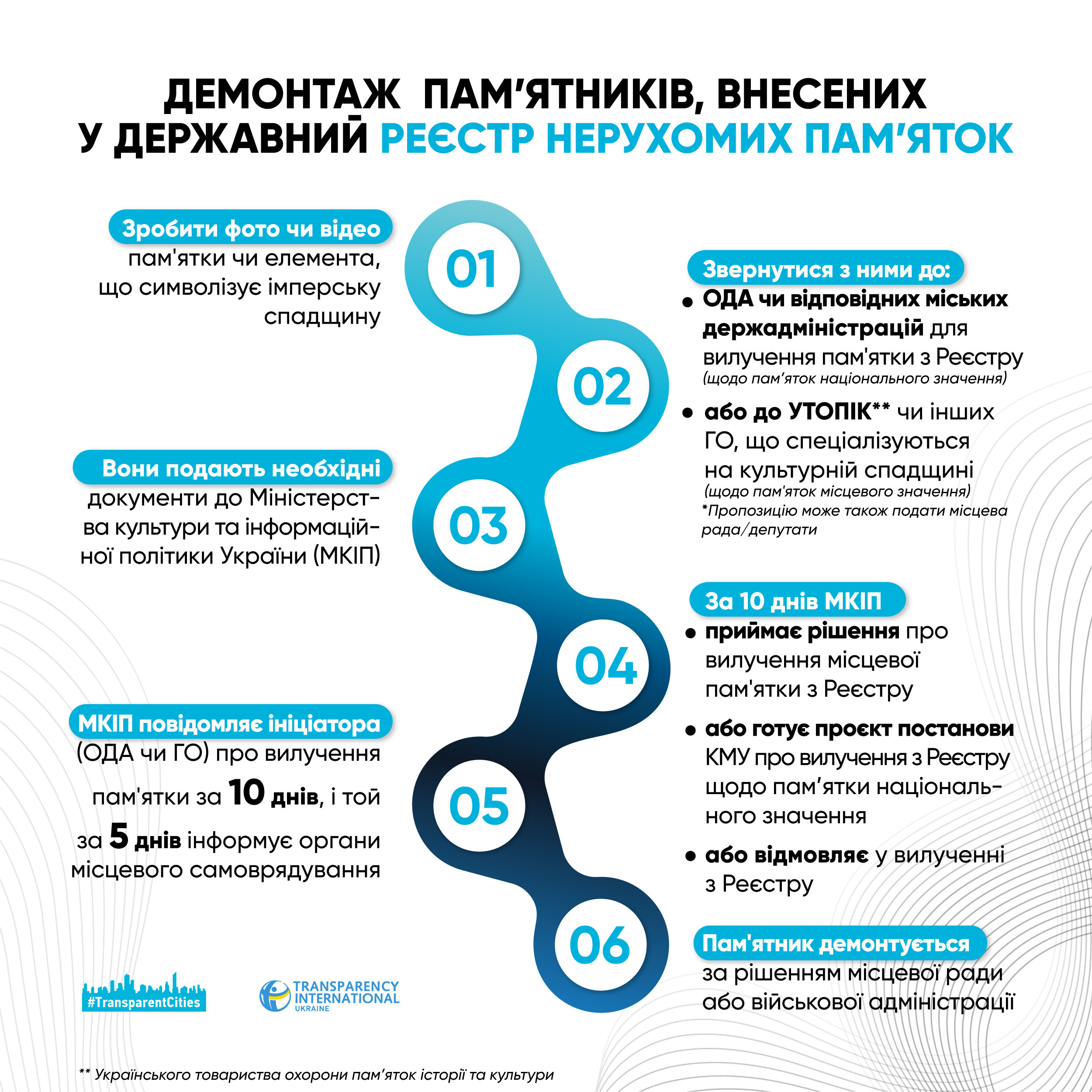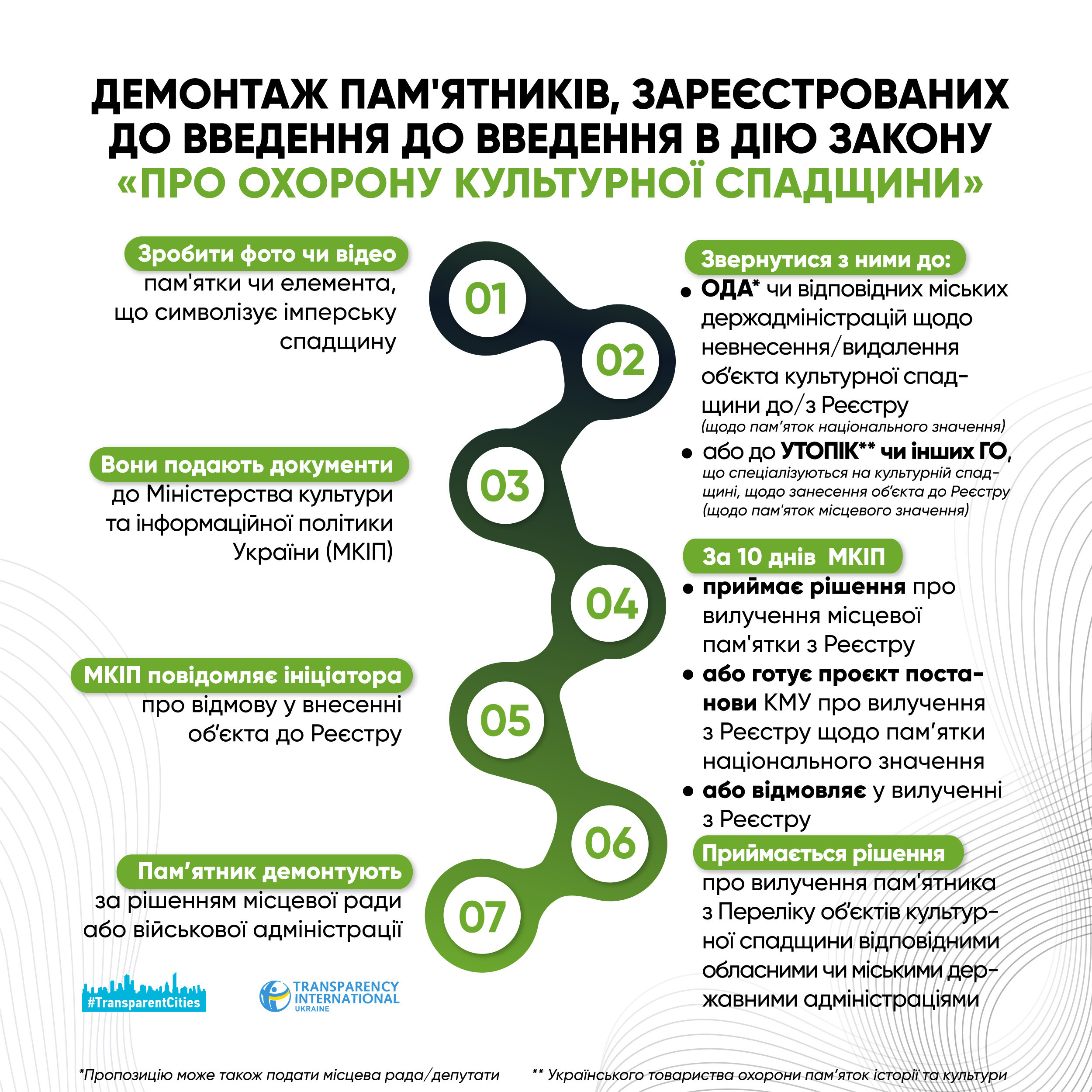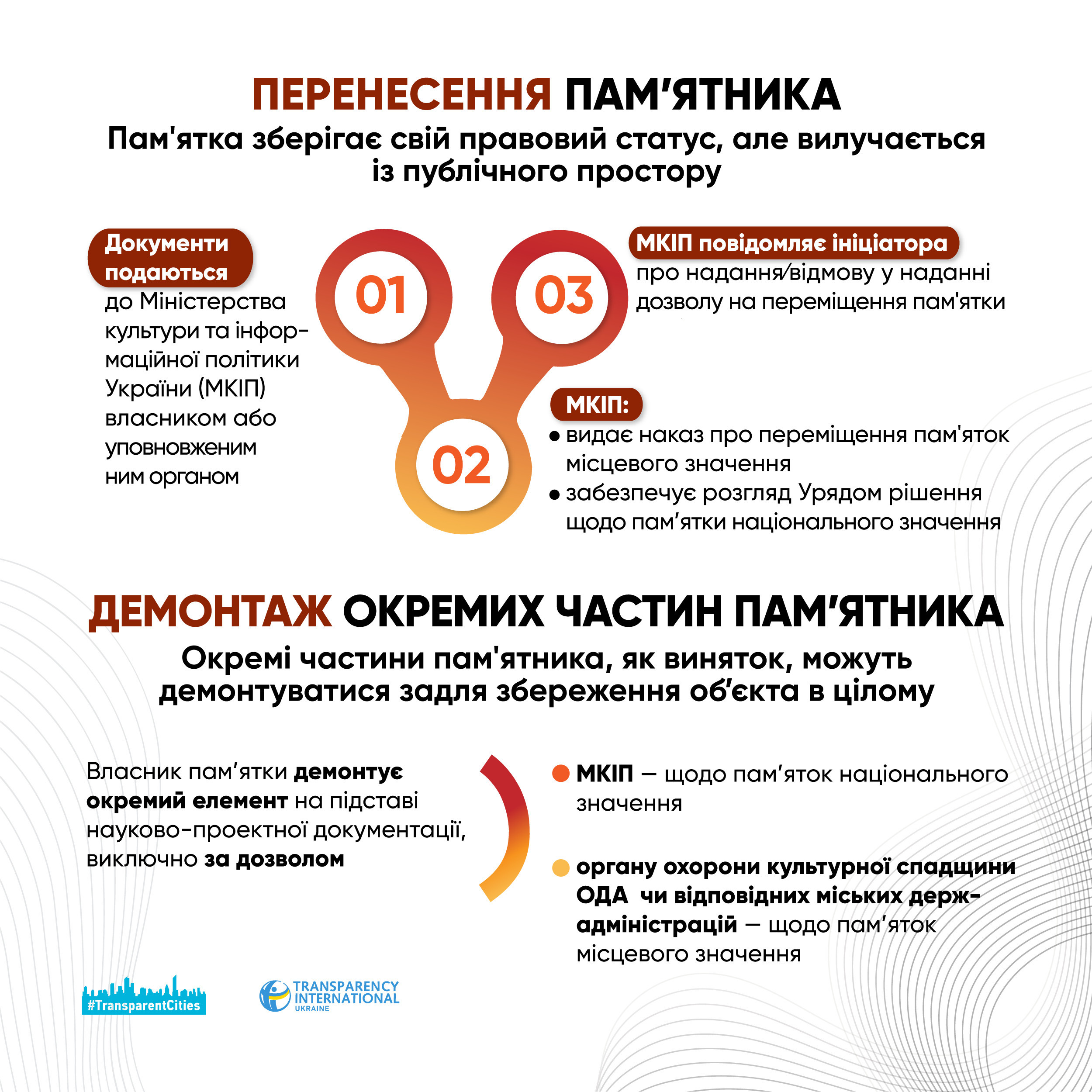What mechanisms there are for clearing Ukrainian cities of imperial heritage symbols?
After more than a year and a half of war with Russia, we have finally succeeded in decolonizing the space where citizens spend their lives in Ukraine. Sometimes, they are still forced to look at imperial, Soviet, and Russian names and figures every day.
While the renaming process is quite rapid, 42 city councils have renamed 3,225 toponyms by July 2023, monument removal is less intensive. 600 monuments were demolished in 23 regions in 2022. Zakarpattia, Lviv, and Kyiv regions have become leaders in the number of demolished monuments. 28 monuments to Pushkin were demolished.
The Transparent cities program continues studying this topic. In this article, you can find detailed information on how to demolish pro-Russian monuments legally and responsibly, and how you can be involved in it.
Why does the decision to demolish pro-Russian monuments sometimes take so long?
This includes demolishing the same numerous monuments to Soviet army leaders, Russian and Soviet politicians, party leaders, (pro-)Russian writers, artists, and journalists, as well as events and dates significant for the empire.
Images of Pushkin, unknown Soviet soldiers, marshals, and others immediately come to mind, and those, who needed to be honored so that the locality or territory was considered part of a great and powerful Soviet Union. Monuments to milkmaids, communism builders, and others are also in this list. Read more here about symbols forbidden to glorify. Fortunately, times are changing, and now we need to get rid of such rubbish (and/or move it to special places like museums, etc.).
But why, despite all the urgency with pro-Russian monuments, is it difficult to achieve even decisions “on paper”?
Demolishing or transferring monuments, which are symbols of Russian imperial policy, is a very comprehensive process, the variety of procedures is impressive, and each option has its deadlines and performers.
The legislation clearly defines the periods and responsible persons for demolishing/transferring monuments.
This is the timeline:
- July 27, 2023 — January 27, 2024*
The city council (military administration, civil-military administration) decides on demolishing/transferring monuments.
- January 27, 2024— March 27, 2024*
If the city council does not decide on demolishing/transferring an object on time, the decision is made by the city mayor (or a person exercising his/her powers).
- March 27, 2024— July 27, 2024*
If the city mayor does not issue a corresponding order within 3 months, the decision to demolish or transfer an obejct is made by the head of the relevant regional state administration.
*If the monument is located at an honorary burial site outside the cemetery, it is dismantled along with the reburial procedure. Even if a single element on it symbolizes Russian imperial policy, then it should be dismantled or removed from public space.
! If the local council refuses to decide to dismantle or relocate the monuments, residents have the right to file a lawsuit with the administrative court.
In general, in this whole process, the city council is strongly advised to take into account public opinion, but if the public is against the demolition, the authorities must still do it, as it is required by law.
However, this action plan is only suitable for those monuments or signs that are not included in the State Register of Immovable Monuments of Ukraine or are not registered with the state. For others, the procedures are more complicated, and the Ukrainian Institute of National Memory has prepared a separate explanation.
How you can help clean up the space
See the inaction of the authorities? Take the matter into your hands! Everyone can start the process of demolishing/transferring Russian monuments in their city or community. There are 5 variants:
- Demolishing/transferring monuments that are not included in the State Register of Immovable Monuments of Ukraine or are not registered with the state;
- Demolishing/transferring monuments listed in the State Register of Immovable Monuments of Ukraine;
- Demolishing of monuments that were registered with the state by the legislation in force before the Law on the Protection of Cultural Heritage came into force;
- Transferring the monument;
- Demolishing its separate parts.


 How to find out if a monument is included in the register or registered? To do this, you need to check whether it is included in the State Register of Cultural Heritage Sites of National Importance. The Register is here. This register also includes objects of local importance. In addition, the list of monuments can be published by regional state administrations on their official websites.
How to find out if a monument is included in the register or registered? To do this, you need to check whether it is included in the State Register of Cultural Heritage Sites of National Importance. The Register is here. This register also includes objects of local importance. In addition, the list of monuments can be published by regional state administrations on their official websites.
Most of the described options for demolishing require the involvement of professional institutions, such as the Ministry of Culture, the Institute of National Remembrance, cultural heritage protection bodies, etc. A detailed analysis of all the procedures with the people involved and the deadlines is available in our instructions.
Don't forget about publicity. If the authorities ignore citizens' requests for dismantling, publicity will help you increase the chances of success of your demolition initiative.
“Influence through the media, social networks, and direct communication with local council members, i.e. publicity, is effective. This is appropriate given the ban on assemblies and to preserve democratic principles and decision-making procedures in communities. After publications in the media, a bad decision can always be changed if there is a convincing argument and proper communication,” believes Taras Kremin, the Commissioner for the Protection of the State Language.
Reference
Decolonization is the process of rejecting and rethinking colonial influence and regaining control over a country’s cultural, historical, and social heritage. We use this term as a collective definition that refers to both decommunization, i.e. getting rid of the symbols of communist ideology, and derussification, i.e. the rejection of the symbols of the Russian Empire and Russia in the public space of our country.
These processes are regulated by the law on decommunization, which obliges local governments to rename communist place names, and the law on decolonization, which prohibits honoring and promoting names with symbols of Russian imperial policy. We have described all the processes and opportunities for citizens' influence in detail in our Guide to Decolonizing Cities.
The material was prepared in cooperation with Maryna Pavlenok, Communications Manager at Transparency International Ukraine, Oksana Umrysh, designer at Transparency International Ukraine, and Andrii Shvadchak, a lawyer at Transparency International Ukraine.